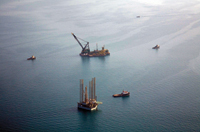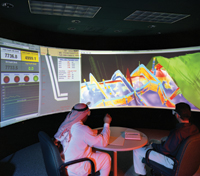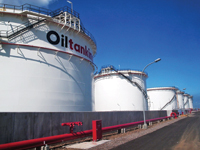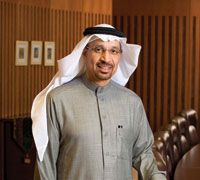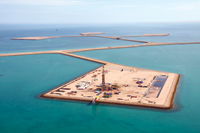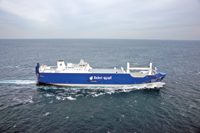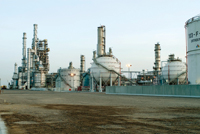
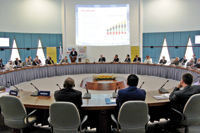 Shell putting forth its outlook of world energy at IEF in Riyadh, Saudi Arabia
Shell putting forth its outlook of world energy at IEF in Riyadh, Saudi Arabia
WITH global energy demand projected to increase by as much as 80 per cent by 2050, Shell has kicked off a dialogue with senior officials from various public and private organisations in Riyadh in Saudi Arabia at the International Energy Forum (IEF) to share results of its global outlook on long-term trends in the energy sector over the next fifty years.
Called “New Lens Scenarios”, the Shell outlook developed by a group of economic, political and energy experts explores different views of how the future might unfold to improve our understanding of the world’s energy system in an era of shifting global dynamics.
“The global financial crisis has ushered in an era of macro-economic volatility and has accelerated the shift in influence from West to East. Hundreds of millions of people in emerging economies are moving out of poverty as global wealth levels rise, but at the same time, rising wealth generating stresses on the world’s energy, water and food resources. The New Lens Scenarios are designed to illustrate how the choices governments, consumers and companies make today determine the energy system of the future,” says Wim Thomas, Shell chief energy advisor, who presented the new scenarios on behalf of Shell.
In the first scenario, called “Mountains”, the worldwide success of unconventional gas development and intelligent urban planning contributes to the transformation of the global transport system over the next 50 years, by providing the infrastructure for a car fleet powered mainly by electricity, hydrogen and natural gas.
In the second scenario, called “Oceans”, strong economic growth and a lack of policy progress in key areas result in higher oil prices, making it economically viable to apply enhanced recovery technologies more widely to develop resources trapped in technically complex and challenging locations. Oil supply and demand continues to grow the coming decades and by mid-century, liquid fuels still deliver 70 per cent of road passenger kilometres.
However, the second scenario also foresees strong growth of solar energy, such that it becomes the largest energy source the second half of this century.
These areas of future energy outlook are of particular relevance to Saudi Arabia where energy and water demand continues to grow due to rapid population growth, urbanisation and the expansion of energy-intensive industries, which are key to fulfilling Saudi Arabia’s Vision 2020.
Also speaking on the occasion, Patrick Van Daele, vice president and country chairman of Shell in Saudi Arabia and Bahrain comments: “Sustainability is key for Shell and Saudi Arabia, both in terms of growth strategy, and the environmental and socio-economic climate in which we operate. It is key for Shell and its partners in Saudi Arabia to enable a sustainable future for its citizens through the right combination of policy, technology and commitment from industry, government and society to meet the energy challenge together.”
Van Daele adds that “there is no single scenario to meet rising energy demand, but different circumstances will require different ways of bringing together expertise while honouring societal roles and responsibilities. The quality of relationships between government, industry and civil society will be a critical factor in realising positive future energy outcomes.”
Shell has a 40-year history of using scenario planning to explore possible future landscapes and aid strategic decision-making. Over time, the Shell Scenarios have gained a global following among governments, academia and other businesses. They have helped deepen understanding of how the world might appear decades ahead.
Shell has been developing scenarios to explore the future since the early 1970s. Scenarios are stories that consider “what if?” questions. Whereas forecasts focus on probabilities, scenarios consider a range of plausible futures and how these could emerge from the realities of today.
They recognise that people hold beliefs and make choices that lead to outcomes. Shell’s scenarios team considers changes such as in the global economic environment, geopolitics, resource stresses such as water, greenhouse gases, and energy supply and demand to help business leaders make better decisions.












































































